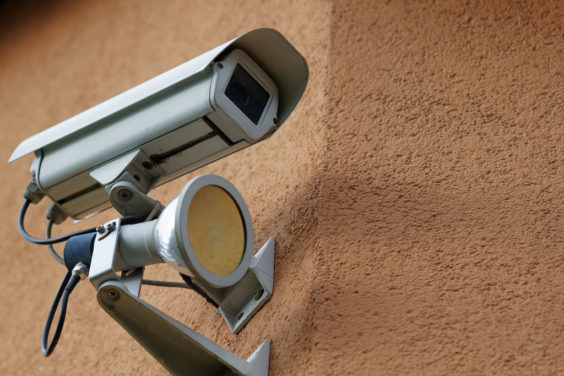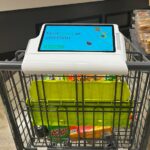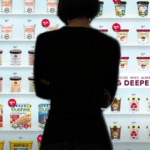
Facial recognition cameras are no longer the stuff of science fiction, and cameras that can recognize individual items on grocery store shelves are already in place in Amazon’s cashierless “Amazon Go” stores. So inventors are coming up with all kinds of ideas using similar technology – there are cameras that will alert staffers when a known shoplifter enters the store, and there are cameras that will recognize you as you walk through the doors and provide you with deals based on your purchase history.
Now, building on that idea, a newly-published patent application describes a system in which cameras will recognize you, keep track of your every move in the store, watch what products you look at or pick up, and offer you coupons based on the items you’re browsing.
So is this cool, or creepy?
The idea is described in an application entitled “Promotion Based on Item Interaction”, by NCR. It aims to solve a problem with personalized coupons as they currently exist – they’re only offered after you’ve already bought something. How else will a personalization system know what you’re interested in buying, if it doesn’t have access to a purchase history of things you’ve already bought?
“Currently, there is no way to give customers coupons or otherwise provide customers with an incentive to purchase an item based on the customer interacting with the item in the store,” the patent documentation explains.
So NCR proposes a system of “sensors and cameras located throughout the store” that would “monitor the customer’s location and track time spent within various departments”. In addition, the system would “identify products with which the customer interacts”.
Based on all of this information, the system would be able to “provide customized recommendations or promotions to the customer’s mobile device.”
The idea is similar to others that have already been proposed and tested, that track you as you move through the store and offer you coupons based on your general location, such as what aisle you’re in. But NCR’s system would be much more specific, tracking not only your location but what specific products you’re considering buying.
It would accomplish this by recognizing both you, and the products you’re interacting with. Cameras would use facial recognition technology to identify you and access your purchase history and preferences as you enter the store. Then the cameras would compare the products you’re looking at against “a database of images of products within the store”.
If you’re in the cereal aisle and pick up a box of Frosted Flakes, for example, the cameras would recognize the box and could send a Frosted Flakes coupon to your phone to prompt you to buy it. Or you might get a coupon for a competing brand to tempt you to put the Frosted Flakes back on the shelf and buy something else instead. And if the cameras see you put a box of cereal into your shopping cart, you might then be offered a coupon for milk.
And if you’re not interested in anything you’re offered, the system could keep on suggesting coupons until it finally gives you something you like. “A first incentive can be sent to the consumer while the consumer is holding the item,” the patent application explains. The system “can determine that the consumer rejected the first incentive by determining that the consumer put the item back on the shelf,” so then it might offer a “second incentive (that) can provide a greater discount for the item and/or recommend a second item that is similar to the first item”.
It could even tailor coupons to your personal preferences. If your customer profile indicates that you have food allergies, or prefer to buy gluten-free products, the system would scan the list of ingredients for a product you’re considering. If you pick up a particular brand of pasta, for example, the system “may transmit an incentive to a second pasta that is gluten free and provide a warning to the consumer that the initial pasta the consumer was evaluating is not gluten free”.
Such a system would certainly be convenient in that it could offer you coupons you might actually want to use. And you could use them right away, instead of having to buy the product first, then getting a coupon you can only use on your next purchase.
But do you really want your phone to buzz every time you look at an item, pick one up, or put one back? It’s like having a pushy salesperson in your pocket or purse that won’t let you browse in peace. And while most of us are already aware that we’re being watched by store security cameras, a system that reacts to each and every item you interact with could come across as intrusive and – yes – a little creepy.
It’s too soon to know whether NCR’s proposal will become reality. But if it does, couponing could become practically effortless – just as long as you don’t mind being watched while you do it.










